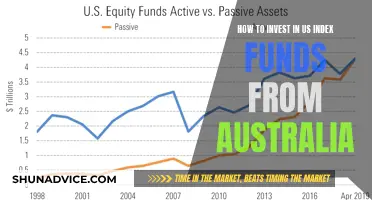
ELSS stands for Equity Linked Savings Scheme. ELSS funds are tax-saving mutual funds that combine the benefits of equity investments with tax deductions under Section 80C of the Income Tax Act, 1961. ELSS funds have a lock-in period of three years, the shortest among all tax-saving investments, and offer the potential for high returns. ELSS funds invest a large portion of their corpus into equity or equity-related instruments, providing investors with the dual benefits of capital appreciation and tax savings.
To invest in ELSS funds, you can follow a similar process as investing in any other mutual fund. You can invest either as a lump sum or through a Systematic Investment Plan (SIP). The SIP method is generally considered better as it ensures regularity and discipline and reduces the risk to capital. When investing in ELSS funds, it is important to consider factors such as the investment horizon, returns, and lock-in period. ELSS funds are suitable for salaried individuals looking to balance risk and return on their investment portfolios, as well as first-time investors who want to benefit from tax savings and gain exposure to equity investing and mutual funds.
| Characteristics | Values |
|---|---|
| Type of fund | Equity-oriented mutual fund |
| Tax benefits | Up to Rs. 1.5 lakh per annum under Section 80C of the Income Tax Act, 1961 |
| Investment options | Dividend option and growth option |
| Minimum investment | Rs. 500 |
| Lock-in period | 3 years |
| Risk | High |
What You'll Learn
- ELSS funds are a type of mutual fund that offers tax benefits under Section 80C of the Income Tax Act, 1961
- ELSS funds have a short lock-in period of three years, the lowest among tax-saving investments
- ELSS funds offer the potential for high returns, especially when the stock market performs well
- ELSS funds provide tax deductions of up to Rs. 1,50,000 per year, resulting in tax savings of up to Rs. 46,800
- ELSS funds invest primarily in equities and equity-related instruments, with a minimum of 80% of their assets

ELSS funds are a type of mutual fund that offers tax benefits under Section 80C of the Income Tax Act, 1961
ELSS (Equity Linked Savings Scheme) funds are a type of mutual fund that offers tax benefits under Section 80C of the Income Tax Act, 1961. ELSS funds are a great way to grow your wealth while also saving on taxes. They are suitable for salaried individuals and first-time investors looking for investment opportunities that offer regular returns and tax savings.
- Tax Benefits: ELSS funds offer tax deductions of up to Rs. 1,50,000 per year under Section 80C of the Income Tax Act, 1961. This helps investors save up to Rs. 46,800 per year in taxes.
- Lock-in Period: ELSS funds have a mandatory lock-in period of three years, which is the shortest among all tax-saving investments. This means that you cannot withdraw your money before the completion of three years from the date of investment.
- Investment Amount: There is no upper limit on the amount you can invest in ELSS funds. However, the minimum investment amount varies across different fund houses, with some funds allowing investments as low as Rs. 100 or Rs. 500 per month.
- Equity Exposure: ELSS funds primarily invest in equities and equity-related instruments, with a minimum of 80% of their assets allocated to these investments. This provides investors with the potential for substantial returns, especially when the stock market performs well.
- Diversification: ELSS funds invest in a diversified portfolio of equity stocks across different sectors and market capitalizations, helping to reduce risk and improve the potential for better returns.
- Liquidity: ELSS funds are open-ended mutual fund schemes, which means that you can redeem your units at any time after the completion of the three-year lock-in period.
- Systematic Investment Plan (SIP): Investors can choose to invest in ELSS funds through SIP, which allows them to make disciplined investments over time and gain long-term returns.
When investing in ELSS funds, it is important to consider your investment horizon, risk tolerance, and financial goals. It is also recommended to research and compare the performance of different ELSS funds before selecting one that aligns with your investment strategy.
A Beginner's Guide to Index Fund Investment on E-Trade
You may want to see also

ELSS funds have a short lock-in period of three years, the lowest among tax-saving investments
ELSS funds have a lock-in period of three years, which is the shortest among all tax-saving investments. This makes them suitable for short-term investors and those seeking to minimise their investment risk.
The lock-in period for ELSS funds is significantly shorter than that of other tax-saving options such as the National Savings Certificate (NSC) and Public Provident Fund (PPF), which have lock-in periods of 6 and 15 years, respectively.
The short lock-in period of ELSS funds provides investors with greater flexibility and access to their investments. This is particularly beneficial for those who may need to withdraw their funds earlier or prefer shorter investment commitments.
Additionally, ELSS funds offer tax benefits under Section 80C of the Income Tax Act, 1961. Investments of up to Rs. 1.5 lakhs per annum qualify for tax deductions, resulting in potential tax savings of up to Rs. 46,800 per year.
It is important to note that while ELSS funds have a mandatory lock-in period of three years, there is no maximum tenure for investment. Investors can choose to stay invested after the initial three-year period for as long as they wish. This feature allows for long-term wealth accumulation and the potential for higher returns, especially when the stock market performs well.
The combination of a short lock-in period and tax advantages makes ELSS funds an attractive option for individuals seeking tax-saving opportunities with the added benefit of wealth creation.
Vanguard Target Date Funds: Where Your Money Goes
You may want to see also

ELSS funds offer the potential for high returns, especially when the stock market performs well
ELSS funds are a great way to grow your wealth while enjoying tax benefits. ELSS stands for Equity Linked Savings Scheme, and it is a type of mutual fund that invests in equity shares. ELSS funds are known for their potential for high returns, especially when the stock market is performing well. This is because they invest primarily in equity and equity-related instruments, which can provide substantial returns when the economy is on the rise.
One of the key advantages of ELSS funds is their short lock-in period of just three years, compared to other investment options like the National Savings Certificate (NSC) and Public Provident Fund (PPF), which have lock-in periods of 6 and 15 years, respectively. This makes ELSS funds attractive for short-term investors. Additionally, ELSS funds offer tax deductions of up to Rs. 1,50,000 per year under Section 80C of the Income Tax Act, 1961. This helps investors save up to Rs. 46,800 per year in taxes.
When investing in ELSS funds, it is important to consider your investment horizon, the fund's performance, expense ratio, and the fund manager's track record. It is also advisable to invest through a Systematic Investment Plan (SIP) rather than a lump sum, as it allows investors to benefit from rupee cost averaging and reduces the risk of investing a large amount at an inopportune time.
ELSS funds are a great option for individuals looking for tax-saving opportunities with high-risk tolerance. The potential for high returns, short lock-in period, and tax benefits make ELSS funds a popular choice for those seeking to grow their wealth.
Overall, ELSS funds offer a dual benefit of tax deductions and wealth accumulation, making them a smart choice for investors looking to maximize their returns and minimize their tax liability.
Unlocking Opportunity Fund Investments: A Guide to Success
You may want to see also

ELSS funds provide tax deductions of up to Rs. 1,50,000 per year, resulting in tax savings of up to Rs. 46,800
ELSS (Equity Linked Savings Scheme) funds are a type of mutual fund that offers tax benefits under Section 80C of the Income Tax Act, 1961. By investing in ELSS funds, individuals can claim tax deductions of up to Rs. 1,50,000 per year on their gross total income. This tax benefit can lead to significant tax savings, potentially amounting to Rs. 46,800 annually.
Here's how it works: when you invest in ELSS funds, you can reduce your taxable income by up to Rs. 1,50,000. This means that you will pay less income tax for the year. The tax deduction lowers your tax liability, resulting in savings. For example, if you fall within the 30% tax bracket and invest the maximum amount of Rs. 1,50,000 in ELSS, you can save up to Rs. 46,800 in taxes (30% of Rs. 1,50,000).
It's important to note that ELSS funds have a lock-in period of three years, which is relatively short compared to other tax-saving investments. This means that your investments are locked in for three years from the date of investment, and you cannot withdraw your money during this period. However, the lock-in period also helps in wealth accumulation, as it provides a longer time frame for your investments to grow.
When considering ELSS funds, it's essential to evaluate your financial goals, risk tolerance, and investment horizon. These funds are suitable for individuals with a long-term investment perspective who are comfortable with the associated risks. Additionally, ELSS funds offer diversification across different sectors and market capitalizations, helping to balance risk and improve the potential for better returns.
In summary, ELSS funds provide a dual advantage of tax deductions and wealth creation. By investing up to Rs. 1,50,000 per year, you can reduce your tax liability and save a significant amount on taxes, making it a smart choice for those seeking to grow their wealth while enjoying tax benefits.
A Step-by-Step Guide to Mutual Fund Investing on Ameritrade
You may want to see also

ELSS funds invest primarily in equities and equity-related instruments, with a minimum of 80% of their assets
ELSS funds, or Equity Linked Savings Schemes, are a type of mutual fund that primarily invests in equities and equity-related instruments. This means that the majority of the fund's assets are invested in stocks and shares of publicly traded companies across various sectors and market capitalisations. By investing in ELSS funds, individuals can claim tax deductions of up to Rs. 1,50,000 per year under Section 80C of the Income Tax Act, 1961. This makes ELSS funds a popular choice for taxpayers looking to avail of tax benefits.
ELSS funds have a minimum investment requirement of 80% of their assets in equity and equity-related instruments. This high exposure to equities provides the potential for substantial returns, especially when the stock market performs well. The fund management teams conduct extensive market research to select stocks and construct a well-diversified portfolio to optimise long-term wealth appreciation.
When investing in ELSS funds, individuals have the option to invest through a Systematic Investment Plan (SIP) or a lump sum amount. SIP allows investors to invest smaller amounts at regular intervals, providing the benefit of rupee cost averaging. On the other hand, investing a lump sum amount is generally recommended for investors with a higher risk tolerance and a longer investment horizon.
It is important to note that ELSS funds have a mandatory lock-in period of three years, which is the shortest among all tax-saving investments. This means that investors cannot withdraw their money from the ELSS fund before the completion of this three-year period. After the lock-in period, investors have the option to redeem their investments or stay invested for a longer period.
Overall, ELSS funds offer a dual benefit of tax deductions and wealth accumulation, making them an attractive investment option for individuals looking to save taxes and build their wealth.
Maximizing Investment Funds: Strategies for Financial Success
You may want to see also
Frequently asked questions
ELSS stands for Equity Linked Savings Scheme. It is a type of mutual fund that invests mainly in equity and equity-linked securities. ELSS funds offer tax benefits under Section 80C of the Income Tax Act, 1961.
You can invest in ELSS funds through online mutual fund investment platforms or through a demat account. You can choose to invest a lump sum or through Systematic Investment Plans (SIPs).
ELSS funds offer tax benefits of up to Rs. 1,50,000 per year under Section 80C. They also provide the potential for high returns, with an average of 15% returns in the long term. ELSS funds are suitable for those seeking to balance risk and return, such as salaried individuals and first-time investors.
As ELSS funds are linked to the equity markets, they carry the inherent risks of the stock market, including market risk and liquidity risk. However, with a long-term investment horizon of more than 5 years, these risks can be mitigated to a certain extent.







